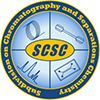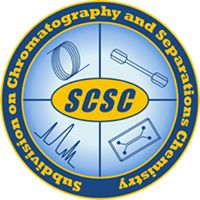The LCGC Blog: Lost Art of Fundamental Electronics in Analytical Chemistry
As described in last month’s blog post, the ongoing global pandemic has transformed the way that educators approach teaching analytical chemistry. As I reflect back on my own experience from the Spring 2020 semester, one positive aspect that has come from the seemingly infinite number of video meetings has been the opportunity to connect with colleagues that we might not consider if it weren’t for the “new normal” of working remotely.

This blog is a collaboration between LCGC and the American Chemical Society Analytical Division Subdivision on Chromatography and Separations Chemistry.
As described in last month’s blog post (1), the ongoing global pandemic has transformed the way that educators approach teaching analytical chemistry. As I reflect back on my own experience from the Spring 2020 semester, one positive aspect that has come from the seemingly infinite number of video meetings has been the opportunity to connect with colleagues that we might not consider if it weren’t for the “new normal” of working remotely. This provides a unique opportunity, that I hope will continue in the future, for instructors to invite experts from across the globe on specific topics to guest lecture. These lectures effectively become a live “Master Class” for students that also helps them build a personal connection with leading scientists in the field. Based on my experience with the use of open-source electronics in chromatographic instrumentation, I was invited by Prof. Dwight Stoll to speak to a class of upper-level undergraduate students at Gustavus Adolphus College taking an advanced class in analytical instrument design. I had a great time meeting his students and discussing their interest in this area, although it did also lead me to realize that instruction in fundamental electronics and circuit design is becoming less central to analytical chemistry education and is now a “special topic” rather than a core curriculum component. This should be a cause for concern to the entire analytical chemistry community, as the need for chemical analysts to fully understand both the chemical and electronic principles behind the data they collect is critical to the future of our field.
My first experience in this area came at the beginning of my graduate program at the University of North Carolina at Chapel Hill. The first few weeks following the move to North Carolina were focused on program entrance exams, preparing to both take and teach fall classes, and getting acclimated to a new geographical area. In conversations with senior analytical graduate students, whispers of the “dreaded electronics class” were widespread. On the first day of “CHEM 442L, Chemical Instrumentation Lab,” the reason became clear: We were given a key to a small electronics laboratory so that we could work outside of class hours, a book of experiments with a general timeline of when each project was to be completed, and the advice to get started as soon as we could. As a first-year student with little-to-no experience in electronics, I was terrified! Over a decade later, I have come to realize that this course was actually one of the most critical aspects in my growth as an analytical chemist. First and foremost, the course design promoted a blend of hands-on exploration and collaboration in the laboratory, which are key aspects to growing as an independent researcher in the field. Also, it forced us to learn the ability to troubleshoot electronic equipment, because mixing circuit design and inexperienced students often leads to burnt components, blown fuses, and various expletives. Of utmost importance, it introduced me to the concept of a high-pressure oral examination setting, which came in handy during my preliminary and final presentations en route to the doctoral degree. These long-lasting lessons came along with introductions to coding, data acquisition, signal processing, timing circuitry, analog and digital filtering, and a wide variety of other topics that I used throughout my graduate research career and still rely on today. Although I didn’t enjoy every minute of the class at the time, especially during the late-night sessions spent trying to get some aspect of a circuit to work properly, I now look back fondly on the time spent in that laboratory-Âespecially since it is where I first met my wife!
I didn’t have the opportunity to learn much about instrument circuitry or op-amp design in my undergraduate analytical chemistry classes, which put me at a disadvantage when I first started the graduate electronics course compared to my colleagues that had. As I teach these same undergraduate classes now, I better understand the reason these concepts weren’t included and the challenge that all analytical chemistry instructors face: With a broad field such as chemical analysis, what do you teach and what do you leave out in a 16-week course? In the upper-level “Instrumental Methods” course that I teach now, I spend at least two lecture periods discussing widely used op-amp circuits, specifically those related to signal transduction, data filtering, and data acquisition. These core concepts are important to the broader field but are especially relevant for chromatographers because of their impact on detector settings during method design. As high-throughput methods become increasingly relevant (2), data acquisition and filtering rates become critical aspects to ensuring high-quality chromatographic data (3). High efficiency chromatography can quickly be diminished by undersampling of peaks or high levels of electronic noise, or both, but these detrimental effects are avoidable with a general understanding of the underlying fundamental concepts that are taught in electronics coursework.
So how do we encourage our peers to adopt more concepts related to instrument electronics into their curricula? One strategy involves the approach of turning our students from “instrument users” into ”instrument builders,” because this allows for hands-on practical experience with relevant circuitry while still maintaining focus on the core analytical techniques that must be covered. Many traditional second-year undergraduate laboratories can be updated to include content related to instrument design (4): Burets used for titrations can be automated (5), pH meters can be constructed (6), and absorbance spectrometers can be built (7). The number of different samples that a student can analyze in a semester may be reduced because of the time needed to work on circuits for these home-built instruments, but this is a small price to pay for the hands-on experience in instrument design that is gained. For budget-conscious departments, this approach is particularly appealing, because open-source microcontrollers and single-board computers have significantly lowered the cost required to conduct these activities-these items are much cheaper than a new instrument! This line of reasoning led to my current interest in this area: During my time as a postdoctoral fellow at the University of Michigan, there was growing concern related to the data acquisition systems for a number of gas chromatography–thermal conductivity detector (GC-TCD) instruments used in the teaching laboratory. These systems were built using older commercial analog-to-digital interfaces and control software, with a growing fear that they would become obsolete when computers running on older operating systems finally broke. Inspired by the growing movement in open-source electronics, we designed a simple Arduino-based circuit and control software that enabled any modern computer with a USB connection to easily acquire and plot the chromatographic detector data (8). More recently, we demonstrated that single-board computers can be used to build an even better system that includes common data processing needs for chromatograms while eliminating the need for a separate desktop PC (9). Although our main interest lies in integrating this system into portable analytical platforms, we also appreciate its potential in “future-proofing” data acquisition by designing it with a simple $35 computer that is widely available and easily replaced. With the simple instructions that are included for its construction and use, it becomes a feasible project for any chemistry student or professor to complete.
The time is now for analytical chemistry instructors to act and ensure that the next generation of measurement scientists has the necessary background in circuit design, simple coding, data acquisition, and signal processing required to better understand the information obtained from modern systems. As the major instrument manufacturers continue to promote simplicity and ease-of-use, it will be easy for the wider analytical community to drift further away from the fundamental concepts that make these platforms work. With a few simple, low-cost tweaks to existing laboratory activities, the goal of increasing our students’ understanding of these topics with hands-on experience has never been easier to achieve.
References
- K. Perrault, The LCGC Blog: Experiential Learning Interrupted: Reflecting on Teaching Chromatography During a Pandemic. LCGC (2020) at <http://www.chromatographyonline.com/lcgc-blog-experiential-learning-interrupted-reflecting-teaching-chromatography-during-pandemic>
- A. S. Kaplitz et al., Anal. Chem.92(1), 67–84 (2020).
- M. F. Wahab, P. K. Dasgupta, A. F. Kadjo, and D. W. Armstrong, Anal. Chim. Acta907, 31–44 (2016).
- P. L. Urban, J. Chem. Educ.91(5), 751–752 (2014).
- T. Cao, Q. Zhang, and J. E. Thompson, J. Chem. Educ.92(1), 106–109 (2015).
- H. Jin et al., J. Chem. Educ.95(2), 326–330 (2018).
- K. Bougot-Robin, J. Paget, S. C. Atkins, and J. B. Edel, J. Chem. Educ.93(7), 1232–1240 (2016).
- J. P. Grinias, J. T. Whitfield, E. D. Guetschow, and R. T. Kennedy, J. Chem. Educ.93(7), 1316–1319 (2016).
- S. W. Foster, M. J. Alirangues, J. A. Naese, E. Constans, and J. P. Grinias, J. Chromatogr. A1603, 396–400 (2019).

James P. Grinias is an assistant professor in the Department of Chemistry & Biochemistry at Rowan University, in Glassboro, New Jersey. He has spent the past decade researching the fundamentals of liquid-phase separations in capillary and microfluidic columns as well as applications in neuroscience, molecular physiology, and pharmaceutical fields. He also studies the use of new technology to enhance educational outcomes in the undergraduate analytical chemistry curriculum. Jim received his Ph.D. in analytical chemistry from the University of North Carolina at Chapel Hill working in the lab of Prof. James Jorgenson. He also completed a postdoctoral research fellowship at the University of Michigan working with Prof. Robert Kennedy. He has received many honors for his work, including the 2013 Csaba Horvath Young Scientist Award, the 2017 Eastern Michigan University Young Alumnus of the Year Award, and the 2020 Young Investigator Award from the Chinese American Chromatography Association. Direct correspondence to: grinias@rowan.edu

This blog is a collaboration between LCGC and the American Chemical Society Analytical DivisionSubdivision for Chromatography and Separations Chemistry (ACS AD SCSC). The goals of the subdivision include
- promoting chromatography and separations chemistry
- organizing and sponsoring symposia on topics of interest to separations chemists
- developing activities to promote the growth of separations science
- increasing the professional status and the contacts between separations scientists.
For more information about the subdivision, or to get involved, please visit https://acsanalytical.org/subdivisions/separations/.

.png&w=3840&q=75)

.png&w=3840&q=75)



.png&w=3840&q=75)



.png&w=3840&q=75)